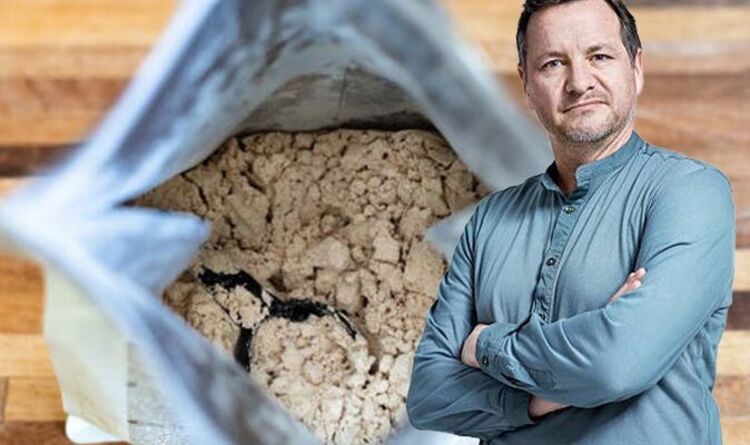Dr Chris reveals how eyes can indicate high cholesterol levels
We use your sign-up to provide content in ways you’ve consented to and to improve our understanding of you. This may include adverts from us and 3rd parties based on our understanding. You can unsubscribe at any time. More info
It is often caused by eating fatty food or being overweight, and occurs when you have too much of a fatty substance called cholesterol in your blood. High cholesterol does not tend to cause symptoms, so you can only find out if you have it from a blood test. Changing what you eat, being more active, and stopping smoking can help get your cholesterol back to a healthy level.
The Mayo Clinic notes diet can play an important role in lowering your cholesterol, and says there are several foods which may “improve your numbers”.
It states: “Whey protein, which is found in dairy products, may account for many of the health benefits attributed to dairy.
“Studies have shown that whey protein given as a supplement lowers both LDL and total cholesterol as well as blood pressure.”
Indeed, several studies suggest whey protein can help control cholesterol levels.
READ MORE: Cardiovascular disease: The fruit which may reduce risk just two hours after consumption

A review on PubMed.gov says previous studies have suggested that whey supplementation may have beneficial effects on lipid profiles, “although results were inconsistent”.
A literature search was performed in March 2015 for randomised controlled trials observing the effects of whey protein and its derivatives on circulating levels of triacylglycerol (TG), total cholesterol (TC), low-density lipoprotein cholesterol (LDL-C) and high-density lipoprotein cholesterol (HDL-C).
A meta-analysis was then conducted of 13 trials. It showed that whey supplementation significantly reduced the circulating TG level, whereas the whey protein had no effects on circulating TC.
It says: “In conclusion, our findings demonstrated that the effects of whey protein supplementation were modest, with an overall lowering effect on TG but no effect on TC, LDL-C and HDL-C.”
There is also other dietary advice to follow. Heart UK says some foods contain cholesterol, but surprisingly they don’t make a big difference to the cholesterol in your blood.
It says this is because most of us eat less than 300mg of cholesterol per day – a small amount compared to the amount of saturated fat we eat.
It explains: “All animal foods contain some cholesterol. But by cutting down on the animal foods that contain saturated fats you will be keeping the cholesterol in your diet in check too.”
Heart UK says: “Cholesterol is only found in foods that come from animals, there is no cholesterol in foods that come from plants. So, there is no cholesterol in fruit, vegetables, grains, seeds, nuts, beans, peas and lentils.”

The Heart and Stroke Foundation of Canada says: “As a rule of thumb, steer clear of highly processed foods, even if they are lower in fat content. Low-fat or diet foods are often loaded with calories, sodium and added sugar.”
It says that it is also a good idea to add more vegetarian options like beans, lentils, tofu and nuts to your weekly meal plans, and “get in the habit of filling half your plate with vegetables and fruit”.
You might need medicine to lower your cholesterol if your cholesterol level has not gone down after changing your diet and lifestyle.
You may also need medicine if you’re at a high risk of having a heart attack or stroke, according to the NHS.

If you’re aged 40 to 74, you can get your cholesterol checked as part of an NHS Health Check.
The British Heart Foundation (BHF) recommends all adults have a cholesterol check at any age, even if they feel completely well. It should be repeated every five years – or more often if the test was abnormal.
The cholesterol blood test measures your levels of total cholesterol, LDL cholesterol, HDL cholesterol, and your total cholesterol to HDL ratio.
Your total cholesterol should be 5mmol/L or less for healthy adults or 4mmol/L or less for those at high risk.
Source: Read Full Article






